Arcade machines have now existed, in one form or another, for almost a hundred years. Coin-operated machines were first introduced in the 1920s, and while they only did simple things like telling your fortune or playing music, they started us off down a path through some of the most amazing experiences you can have for £1 (or 50p, or 20p, or 10p, depending on your age).
When people think of “arcade machines” now, of course, they almost certainly think of video game arcade machines. For many years, the most innovative and creative entertainment machines have been video game arcade machines, and while public arcades are certainly on the wane, plenty of great machines are still being made by both big names and small.
The face of arcade gaming has been changed dramatically since the 1970s, sometimes as an evolution but sometimes as a complete revolution. Let’s take a look back at ten of the most important machines along the way…
Galaxy Game (1971)
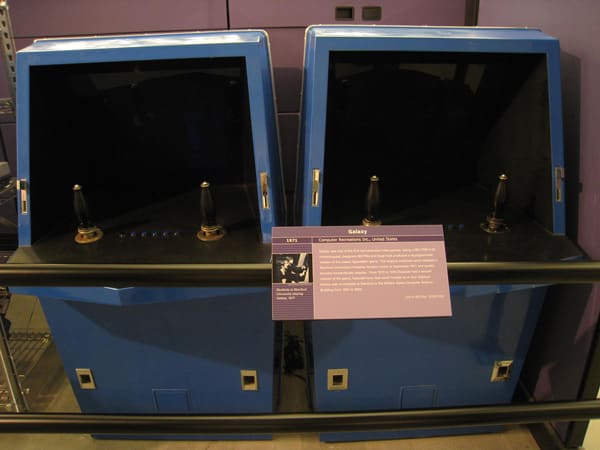
Never heard of it? It’s not surprising. This was the first coin-operated video arcade game, installed at Stanford University by students doing what they do best: providing fun ways to avoid studying. For 25 cents you could get three games of what was essentially an evolution of Spacewar! (the first video game), though you’d potentially have to queue for an hour for the privilege.
Fun Fact: Though this wasn’t the first arcade game, it was the first to charge money for the experience.
Pong (1972)
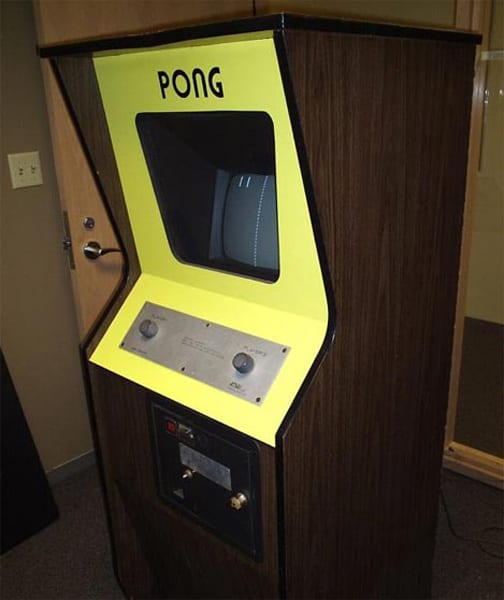
You’ve probably heard of this game. You’ve probably heard that it was the first game made by Atari, and that it made them both famous and successful. You may even have owned one of the unofficial clone machines that came in a bajillion varieties (and just as many tasteful shades of wood veneer). But did you know that the prototype machine, installed in a bar near Atari’s headquarters, malfunctioned as a result of people stuffing it full of quarters until the mechanism overflowed? 38,000 Pong machines were built and sold as a result of its popularity (though no records exist of how many were stuffed so full of quarters they broke down). An international obsession was born out of this unassuming device.
Fun Fact: The plethora of Pong clones for the arcade and home market are sometimes blamed for the first video game crash of 1977.
Space Invaders (1978)
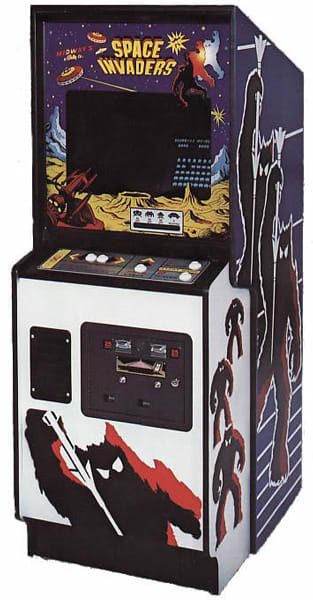
Space Invaders was arguably the most important arcade machine ever, and I say “arguably” because it’s my opinion, but you must concede that its sales, revolutionary gameplay and continuing brand recognition support my point. If you never played Space Invaders, then you almost certainly didn’t go into an arcade in the 80s. It was ubiquitous. This was the second-biggest selling arcade game of all time (we’ll come to the biggest in just a minute) and is held by some to have brought about the Golden Age of Video Games. It also set the template for all shoot-em-ups that came after it, the evolution of which would take at least a whole article to catalogue. To cut a long story short: if you like Halo, Goldeneye, Killzone or Crysis, you’ve got this bad boy to thank.
Fun Fact: Labour MP George Foulkes drafted the “Control of Space Invaders (and other Electronic Games) Bill” in 1981, attempting to ban the game for being addictive and causing deviancy. He certainly wasn’t wrong about its addictiveness.
Pac-Man (1980)
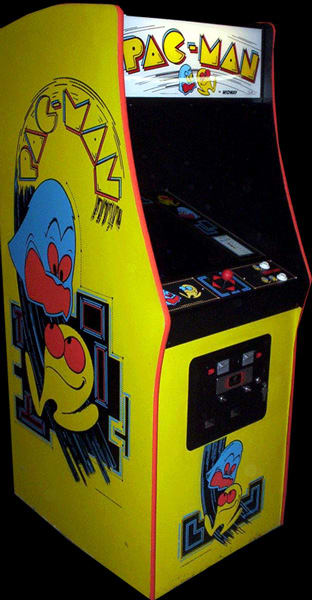
Coming from the unique minds at Namco, Pac-Man introduced the idea of a mascot character, even though at the time he had no personality and was shaped like a chomping hockey puck. The name comes from the Japanese phrase ‘paku-paku’ meaning to flap one’s mouth open and closed (as all you Scott Pilgrim fans will know), and this machine coincidentally had arcade-goers doing exactly that. The thrill of being chased by four deadly ghosts, collecting power-ups and chomping them at the last second, setting a new high score and laughing at your mates… Pac-Man is the biggest selling arcade machine of all time, and it’s easy to see why. Ms. Pac-Man was the first of many spinoffs and sequels, and Pac-Man games are still made to this day, over 30 years later. My personal favourite so far: ‘Pac-Man Vs.’, on the Nintendo GameCube.
Fun Fact: A 1981 song by one-hit wonders Buckner & Garcia entitled “Pac-Man Fever” sold over 2.5 million copies (but no-one knows why; it’s terrible).
Dragon’s Lair (1983)
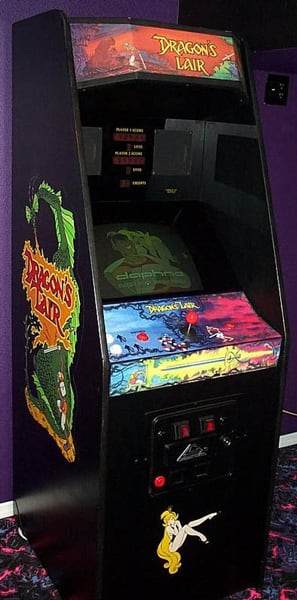
Dragon’s Lair was an awful game. Let’s get that out of the way right now. It was hard to control, made little sense, took ages to load and was far more expensive to play than other machines of its time. Its selling point, however, was that it looked amazing. Stepping up to this machine and putting all your pocket money into it bought you the ability to play a cartoon, instead of a collection of semi-abstract pixels. The LaserDisc format opened up a world of possibilities and changed the face of the arcade experience. It’s a shame that each go on the game never lasted more than about a minute (at least for me).
Fun Fact: The animation in Dragon’s Lair was created by Don Bluth, formerly an animator at Disney.
Out Run (1986)
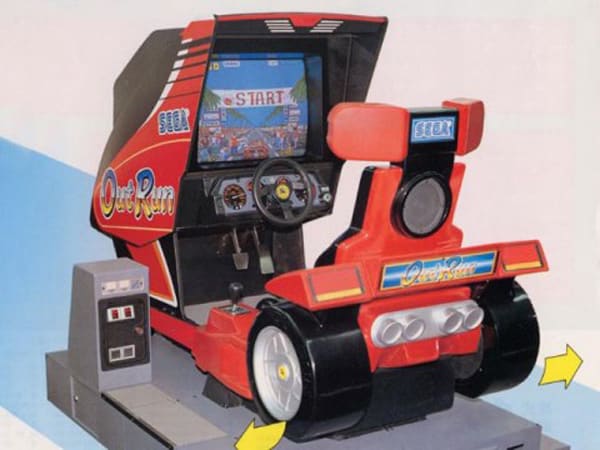
True, Out Run wasn’t the first driving arcade game, or the first to have a cockpit-style cabinet, or really the first to do anything. What it did, however, was refine the arcade experience into something truly cool, and for that it deserves recognition. Cruising along in your Ferrari Testarossa, bikini-clad girl by your side, funky tunes playing on the radio… this machine was the quintessential 1980s experience, and you could almost feel the tropical breeze on your face.
Almost every arcade I visited in the 80s and 90s had one of these, and there was always a line of eager gamers clutching their 20p coins. Sega may have made better arcade games both before and since, but they never made anything quite as cool as Out Run (except maybe the excellent Out Run 2).
Fun Fact: Magical Sound Shower is the best piece of video game music ever.
Teenage Mutant Ninja Turtles (1989)
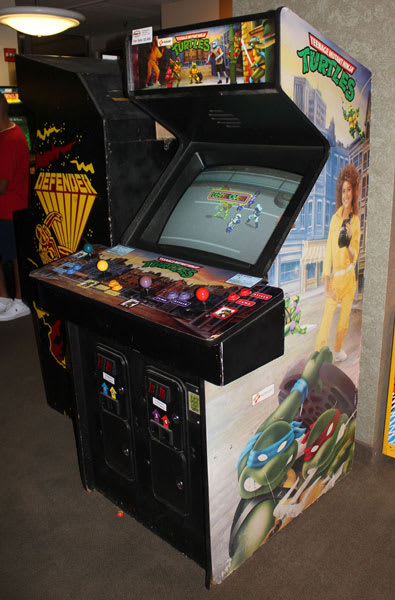
Teenage Mutant Ninja Turtles (or “TMNT”) was possibly the best licensed arcade game ever made. Yes, the Robocop arcade game was fantastic. Yes, Atari’s Star Wars cabinet was almost like flying your own X-Wing. But TMNT let you argue with four mates over who was the best turtle, and then actually go ahead and prove it, head-to-head! Four-player co-operative gaming wasn’t a new experience (TMNT lost out to Gauntlet, among others, in that regard), but the tight controls, digitised speech, great graphics and the ability to nudge your mate if he was doing a bit too well all came together to create an arcade experience that couldn’t be bettered. Well, until Konami made the 6-player X-Men game in 1992, anyway.
Fun Fact: Donatello is the best and the coolest and I’ll fight you to prove it.
Street Fighter II (1991)
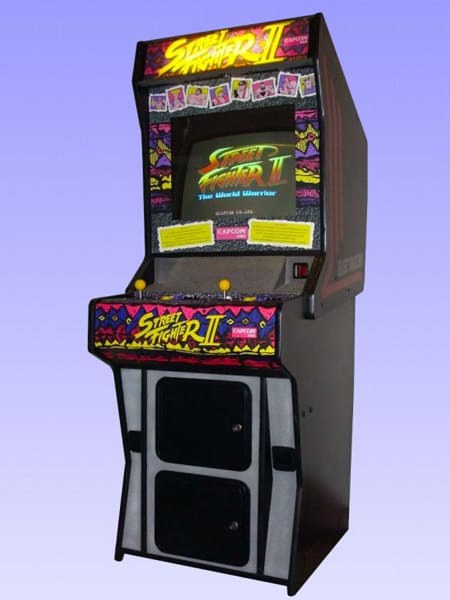
If you’ve ever played a fighting game, then your experience owes something to this most exalted of arcade deities. Fighting games had been around for a while (including the oh-so-forgettable Street Fighter I) but this one took all the best concepts and ran with them. It had eight playable characters, or possibly twelve, or sixteen, or more, depending on which version you played. It had big, well-animated sprites, great music and the controls were impeccable. Capcom deservedly made a lot of money out of this, and continue to iterate the Street Fighter games to this day.
Fun Fact: A ridiculous film of the game starring Jean-Claude Van Damme was made, and then adapted back into a video game, creating probably the only example of a game of a film of a game.
Mortal Kombat (1992)
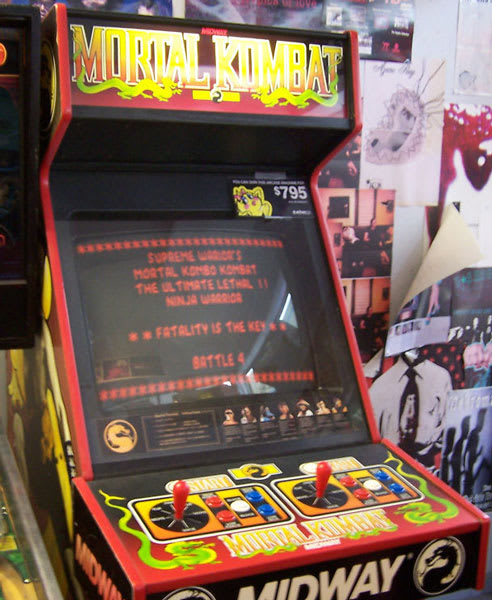
Hot on the heels of Street Fighter II came an arcade machine that was at once similar and yet markedly different. The characters were fully digitised, making the graphics stand out from the game’s competitors with their gritty, realistic look. Then the blood started flowing…
Mortal Kombat caused its fair share of controversy with the copious amounts of gore, hyper-violent moves and, of course, the fabled “FATALITY” finishes. Everyone knew they were in the game, but with no way of discovering them outside of trial and error in those pre-internet days, they mostly stayed as a way the computer AI could taunt you into trying again, by biting your head off or ripping out your heart. The controversy kept players coming back again and again, however, as did the unbeatable sensation of pummelling your mates into a literal bloody pulp.
Fun Fact: My mother hated this game. So did most mothers.
Dance Dance Revolution (1998)
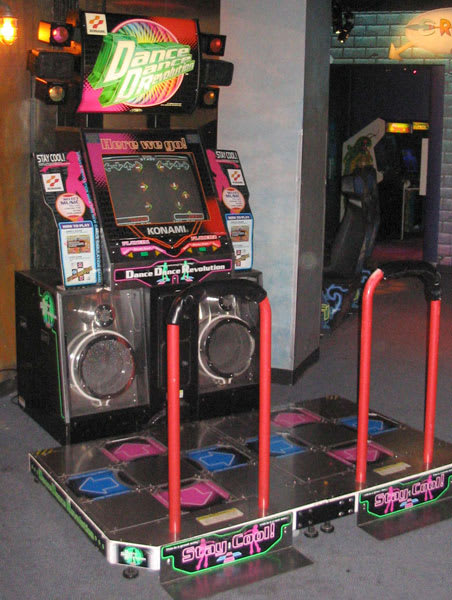
If you go into an arcade today, you’re almost guaranteed to see either a DDR machine, a Dancing Stage machine (the European name for DDR) or one of its competitors, such as Pump It Up. With the first Dance Dance Revolution, Konami created a franchise that has now lasted over fifteen years and has entranced everyone who sees it, from school girls to ageing curmudgeons like myself. Even now when I see one of these machines, I want to jump on and make a fool of myself, because attracting a crowd with your skills is what the arcade experience is all about.
Dance Dance Revolution brought young people back to arcades, and although there were home versions on a variety of consoles (including the surprisingly good Dance Dance Revolution Mario Mix on the GameCube), to me it’s a quintessential arcade experience and should always be played with a crowd of bemused strangers watching.
Fun Fact: The Guiness World Record for longest Dance Dance Revolution marathon is currently 16 hours, 18 minutes and 9 seconds.
So, those are ten machines that have helped to evolve the arcade experience during its forty year-plus history. Obviously more than a few machines are missing from this list, but don’t think that just because I haven’t covered the likes of Donkey Kong, Shinobi, Spy Hunter, Frogger, After Burner et al that they’ve been forgotten.
In the West, arcades are closing down or shifting focus, and we may never see the likes of these innovations again (at least, not in public spaces). Home gaming has taken over, with arcades taking something of a back seat to the experiences provided by consoles. In Japan, however, arcades are alive and well, and the next forty years will most likely produce a whole new plethora of unmissable machines.
What do you think the future holds for arcades? Will we ever see another Golden Age again, and if so, what will it look like? Let us know in the comments below, via Facebook, Twitter, Google + or e-mail [email protected] and tell us what you think!
Written By: Dave Morgan